| Gemstone Chart |
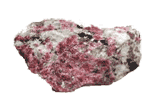 Natural Eudialyte Natural Eudialyte
eudialyte is a rare, plummy-red stone. Eudialyte's name comes from the Greek words "eu" and "dialytos", meaning "easy to dissolve" which refers to the mineral's solubility in acids.The stone's distinctive grey, black or white patterning gives each piece of jewelry a unique beauty.
Color: orange red
Categories: semi-precious stone
Crystal Group: Trigonal
Refractive Index: 1.596 - 1.602
Hardness: 5 - 6
Density: 2.88
Occurrence: Sweden; Kippaw,Canada
| 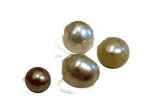 Natural Freshwater Pearl Natural Freshwater Pearl
Freshwater pearls are a kind of pearl that comes from freshwater mussels.Freshwater pearls come in many shapes from round to button shapes, from flat flakes to rice shapes and in many colors. As with the salt water Akoya pearl the round shapes are generally more expensive.
Color: orange, pink, white, gray, light purple, rose, black, brown, gold, yellow, silvery, green, blue, bronze.
Categories: semi-precious stone
Chemical Composition: CaCO3
Crystal Group: Not applicable
Hardness: 3.5 - 4.0
Density: 2.66 ¨C 2.78+
Occurrence: China, Japan
| 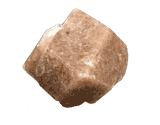 Natural Grossularite Natural Grossularite
A member of the garnet group, grossularite is found in a variety of colors including, yellow, brown, white, colorless, green, violet-red, and orangey red.
Color: Brown, yellow, green
Categories: semi-precious stone
Chemical Composition: Ca3Al2(SiO4)3
Crystal Group: Cubic
Refractive Index: 1.72-1.748
Hardness: 7.25
Density: 3.65
Occurrence: Canada, East Africa, Pakistan, New Zealand, Ceylon, South Africa, U.S.A.
| 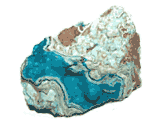 Natural Hemimorphite Natural Hemimorphite
Hemimorphite is a usually white or colorless mineral, essentially Zn4Si2O7(OH)2¡¤H2O, an important ore of zinc. Also called calamine.
Color: Light blue, dark blue, green ,white.
Categories: semi-precious stone
Chemical Composition: (Zn4Si2O7(OH)2.H2O)
Crystal Group: Orthorhombic
Refractive Index: 1.612-1.633
Hardness: 5
Density: 3.44
Occurrence: Franklin and Sterling Hill New Jersey, New Mexico, Montana, Arizona, U.S.A; Congo; Nerchinak in Transbaikalia, Siberia; Zambia; Santa Eulalia and Mapimi, Mexico; England; Wenshan, Yunnan Province, China.
| 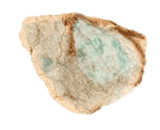 Natural Jadeite Natural Jadeite
A rare, usually green mineral of the pyroxene group. Jadeite can also occur in white, auburn, buff, or violet varieties. The most highly valued form of jade consists of jadeite.Jade has a history in China of at least four thousands years.Experts believe that, although more expensive, diamonds and gold cannot be compared with jade - jade is animated with a soul.
Color: Pure white thru pink, brown, red, orange, yellow, mauve, violet, blue, and black, to an extensive range of green and mottled green and white.
Categories: semi-precious stone
Chemical Composition: NaAl(SiO3)2
Crystal Group: Monoclinic
Refractive Index: 1.654 - 1.667
Hardness: 7
Density: 3.32
Occurrence: Northern Myanmar. Non commercial discoveries of Jadeite have also been reported in China; Russia (in the Polar Urals); Niigata, Japan; San Benito County, California, USA, and Guatemala.
| 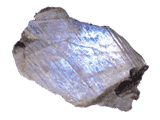 Natural Moonstone Natural Moonstone
The most common moonstone is of the mineral adularia.It is an opaque stone, a simi-clear white, kind of the color of watered down milk.Moonstone Jewellery uses the gemstone moonstone as its main stone.
Color: white, blueish white.
Categories: semi-precious stone
Chemical Composition: KalSI3O8
Crystal Group: Monoclinic
Refractive Index: 1.518 ¨C 1.526
Hardness: 6 ¨C 6.50
Density: 2.55 ¨C 2.57
Occurrence: Sri Lanka, India, Madagascar, Burma, Tanzania, U.S.A.
| 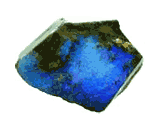 Natural Opal Natural Opal
Opal is the most colorful of all gems. It is a form of silica chemically similar to quartz, but more like glass and containing a variable amount of water within the mineral structure. Its splendid play of color is unsurpassed, and fine examples can be more valuable than diamond. Precious opals (black and white) are cut and polished into cabochons and used in all forms of jewelry.
Color: White, green, blue, black, red, orange, violet, pink, grey, yellow.
Categories: precious stone
Chemical Composition: SIO2nH2O
Crystal Group: Amorphous
Refractive Index: 1.44-1.46
Hardness: 5.5 - 6.0
Density: 2.65 - 3.00
Occurrence: Czechoslovakia, Mexico, Honduras, Australia, Brazil, Tanzania.
| 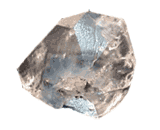 Natural Phenakite Natural Phenakite
phenakite is a fairly rare nesosilicate mineral consisting of beryllium orthosilicate, It is one of the brightest of the colorless gemstones.Madagascar seems to be the most important source for this rare stone.
Color: White
Categories: semi-precious stone
Chemical Composition: Be2SiO4
Crystal Group: Hexagonal
Refractive Index: 1.651-1.696
Hardness: 7.5-8.0
Density: 2.94--2.96
Occurrence: Russia, Madagascar, U.S.A., Brazil, France, Switzerland, Ceylon, E. Africa.
|
|
